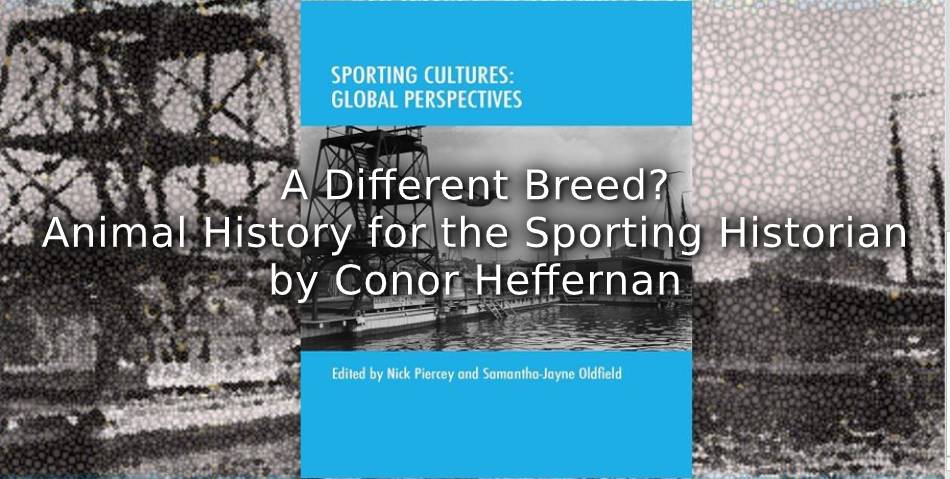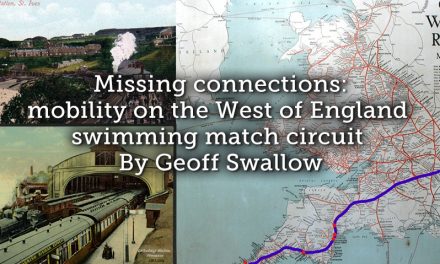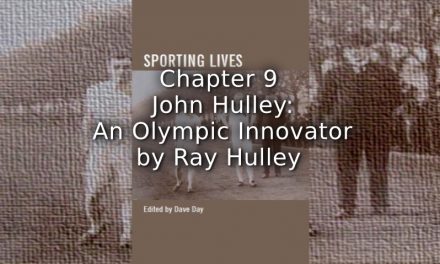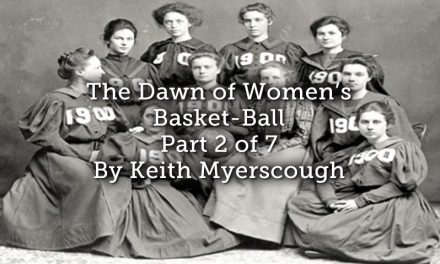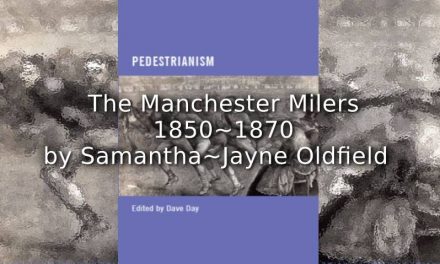Please cite this article as:
Heffernam, C. A Different Breed? Animal History for the Sporting Historian, In Piercey, N. and Oldfield, S.J. (ed), Sporting Cultures: Global Perspectives (Manchester: MMU Sport and Leisure History, 2019), 201-221.
ISBN paperback 978-1-910029-49-7
Chapter 11
______________________________________________________________
A Different Breed? Animal History for the Sporting Historian
Conor Heffernan
______________________________________________________________
‘To put it briefly, animals have been edging toward the mainstream…’[1]
Ritvo, 2004.
‘No academic subject should isolate itself from other disciplines and sports historians need to be aware of theoretical, conceptual and methodological developments in other areas…’.[2]
Day and Vamplew, 2015.
Introduction
The above quotations, stemming from those interested in animal and sporting history, serve as inspiration for the present chapter and its objectives. Although sporting history has undeniably grown in popularity and depth over the past three decades, there has in the past been a noted reluctance on the part of sporting historians to apply the theoretical insights from other disciplines into their own research.[3] While this trend has begun to lessen in recent years as sporting historians have moved away from ‘Rankian’ inspired histories, there are theories and approaches still waiting to be used within the sporting history discipline.[4] Animal history is one approach, which, the present chapter argues, could be profitably used to enhance the current research being done within the field. To argue this, the chapter will begin with an overview of animal history or animal studies as it is commonly known, thereby detailing its emergence as an academic sub-field in its own right before discussing some of the key findings within the field thus far. Following this, the next section will examine the treatment of the animal in sporting histories to date before highlighting some of the benefits accruing from the use of animal history for sporting historians. The chapter will conclude with two cases centred on lion taming in the fin de siècle period. Exploring the case of Eugen Sandow, a popular physical culturist, who on an eventful tour of the United States in 1893 wrestled against Commodore the Lion, the chapter will demonstrate how an animal’s actions can reinforce or destabilise conceptions of hegemonic masculinity.[5] Counterpointing this focus on masculinity, will be a discussion of Clara Pleßke or Claire Heliot as she was more commonly known. Touring in the decade following Sandow, Heliot was promoted as an emblem of femininity in the United States owing to her supposed soothing effect over her lions. Whereas Sandow’s interactions with the lion served to further masculine discourses, Heliot’s were intensely related to normative conceptions of womanhood. In both cases the animal’s actions disrupted their gender performances. The animal’s agency thus mattered, a point that will soon become clear. The chapter seeks to highlight the possibilities offered by animal history to sporting historians and demonstrate that these possibilities can be very far reaching indeed.
The evolution of animal history
Tracing its origins to the late 1970s and early 1980s, the field of animal history or animal studies, has rapidly grown in popularity over the last two decades.[6] Surveying the field in the above quoted source after two decades of varied scholarship, the noted animal historian Ritvo boldly stated that the sub-discipline had become a respectable source of enquiry within its own right.[7] Characterised by many both inside and outside the field for its ‘radical interdisciplinary’ nature, historians interested in animal history have previously called upon other disciplines such as animal psychology, ecology and evolutionary biology with a remarkable vigour to underpin their work.[8] Other works have turned to more critical frameworks of enquiry including but not limited to environmental, colonial, feminist and Marxist approaches to animal history.[9] Though disparate in their periods, aims and methodology, historians have, according to Nance, largely sought to highlight ‘the role of nonhumans in historical processes and events’.[10] In doing so, scholars have placed their focus on human and nonhuman interactions and sought to highlight how both sides change together for better or for worse.[11] Such work is said to be done in contrast with previous historical approaches, which although including animals, have tended to negate questions of the animal’s agency and subjectivity. Put another way, previous studies have used animals akin to props on a stage, devoid of agency and purpose until they interact or appear within human stories. Animal histories have treated animals as the living, sentient and decision-making agents they are.
The reality of the human condition and place within the world suggests that older approaches, those in which animals are largely a peripheral subset, are limiting at best. Humans and non-humans operate, act and react in tandem. Animal histories seek to do justice to both sides of this equation. Some notable works on animal history serve to demonstrate the symbiotic relationships between human and nonhuman in differing contexts. In a fascinating study of the eastern grey squirrel in the United States between the mid-nineteenth century and the early twentieth-century, Etienne Benson’s 2013 study traced the increasing urbanization of the grey squirrel. Tracking this urbanization through several lines of enquiry, the author forcefully argued that this ecological and cultural process affected not only the squirrels’ ways of life but also the urban landscape and human understandings of nature, community and the role of the city.[12] Utilising scientific and lay sources, Benson brought a sense of equality to this history. This is to say that while the community’s impact on, and understanding of, nature was highlighted, so too was the impact of the squirrel upon these human communities and politics.[13] A more forceful account of the latter point can be found in DeJohn Anderson’s study of colonial New England and Virginia, which argued that the nature and ownership of domesticated animals played a crucial role in interactions between European colonizers and American Indians.[14] Though acknowledging the work of previous studies, Anderson broke new ground in attempting to demonstrate how animals produced changes in the land but also in the hearts, minds and behaviour of all who dealt with them.[15] In a similar approach, albeit using a vastly different subject matter, Pekka Hämäläinen’s work on the Lakota Indians stressed the socio-cultural and political impact that new animals wrought upon the tribe. These animals, horses to be specific, were introduced to the Lakota by European explorers. In response to this new livestock, and indeed this new technology, the Lakota restructured their society into one primarily based on equestrian prowess. Though seen by the Europeans and some within the tribe as a sign of advancement, Hämäläinen stressed the deleterious nature of this new social and cultural turn, noting that long held social structures vanished in the transition to an equestrian based society.[16] McShane and Tarr’s work on the horse in nineteenth-century American cities revealed that it was not just the Lakota whose society changed greatly following the introduction, or greater incorporation, of the horse.[17] Other works of considerable note include Skabelund’s work on ‘canine imperialism’, which argued that humans and dogs, or in this case animals, have not just acted together but have evolved and changed together.[18] Finally, Nance’s recent work on the circus elephant in the United States during the twentieth-century has stressed both the symbiotic nature of human and non-human relations, as well as the importance and impact of animal agency within this relationship.[19]
While a strict animal history defined by sources left by the animals themselves is of course an impossibility, historians have utilised records within traditional manmade sources to advance their study.[20] In this vein, newspaper records, personal memoirs, government reports and academic studies have been reimagined to address the animal’s agency and impact on human history. Through this dynamic approach, historians interested in animal history have highlighted how societal changes have impacted upon animal populations, how the domestication of animals has brought disease but also companionship to humans, how animals became and continue to be symbolizers for wider societal issues and finally how humans can come to know themselves through their interactions with the natural world.[21] Within these works scholars have stressed not only the symbiotic relationships between human and non-human, but also issues animal agency.[22] To return briefly to Skabelund’s work, it has become acceptable for historians to examine if the ‘subaltern can bark’, and whether it does so of its own accord.[23]
Still in its cocoon? Animals and sporting history
In 2013, James and Michelle Gilbert produced an edited collection on animals in sport. Utilising some of the key tenants of animal studies discussed above, invited scholars addressed the centrality of human and non-human relationships and used them to explore the wider implications of their chosen sports involving animals.[24] Although primarily centred on more modern examples, the contained articles offered a number of conceptual ideas useful for sporting historians. Birke and Thompson’s work for example, utilising the conceptual framework of Pierre Bourdieu, explored the issue of a horse’s racing habitus, that is to say how horses become proficient in the skills necessary to succeed in horse racing.[25] The authors’ conclusion that a horse racing habitus exists, develops over time and is identifiable was corroborated by the vast literature on horse training which stresses the patience needed in training a horse for race day.[26] In a similar vein, Lund’s piece on dog agility examined the ways in which humans and non-humans develop systems of understanding through training and repeated interaction.[27] Finally, Nance’s work argued that conceptions of animal celebrity can function as broader sites for identity formation within communities.[28]
Could such insights be extended into the realm of sporting history? Implicitly it is already being done. Within the remit of animals in sporting history, those sports involving horses, such as racing or hunting, have undoubtedly been the most popular. While dog racing has received considerable attention, the volume of work pales in comparison to the interest in equestrian histories.[29] As a field of historical enquiry, horse racing has moved from amateur and elite centric histories into broader, more theoretically rich forms of study. Beginning with Vamplew and Huggins in the late 1970s, historians have used the sport as a microcosm for wider societal trends surrounding social class, gender and of course, politics.[30] Regarding social class, Crump’s recent work on the racecourse in Leicester during the nineteenth-century dispelled claims that only middle or upper classes thoroughly enjoyed the sport, thereby demonstrating its popularity amongst all income brackets.[31] Regarding gender, Goodrum’s work on sporting spectatorship examined the role of fashion, femininity and class in British horse meets.[32] Somewhat dated but still relevant, Vamplew’s 1976 work on horse racing explored the social and economic history of horse racing, while Huggins’ work on horse racing from 1919 to 1939 explored the political connotations of the sport.[33] Though such works have been rich in historical insight, the animals themselves have often been viewed as an afterthought. This is not true of all studies, as the small body of literature focused on the sporting animal attests.
Echoing Nance’s work discussed previously, Dashper and Fletcher’s study of Kauto Star used the award-winning race-horse to explore the role of celebrity in the sporting sphere.[34] Although admittedly beginning with a human first framework, the authors nevertheless hinted at the individual animal’s actions on enhancing the sporting drama and the repercussions of this for those assembled in the stands.[35] Similarly, while more concerned with the individual jockey, owner, stable or the wider society, the scant works on horse trainers have touched upon the issue of human and non-human relationships and the impact this relationship can have upon the human.[36] Take for example horse racing whereby training the horse is an integral part of the sporting experience. It requires repeated effort, mutual understanding between human and non-human as well as an act of compliance on the part of the animal. Training underpins the involvement of animals in the sport and requires great trust between human and non-human.[37] Those capable of controlling the animal, as demonstrated in studies of the French circus and also the American West, often garner the admiration and attention from their peers.[38] Horse racing appears to be no different. Relationships between humans and horses thus mattered. At times, as demonstrated by Weil’s work on the circus, such meanings came to take on a wider societal significance. Recent work on hunting suggests that the same is true of the sporting horse.
Echoing scholars’ interest in horse racing, those interested in the hunting of foxes and game, such as Finch, Williams and McKenzie, have likewise examined its social and political functions.[39] Within the past decade and a half, scholars have moved away from more traditional historical approaches towards the more nebulous world of gender identities. McKenzie for example, highlighted the manner in which hunting reinforced ideals of upper-class British masculinity, while Sramek’s study on colonial India depicted hunting as a means of developing imperial nineteenth-century masculinities.[40] Similarly, illustrative has been the work on femininity and the hunt. In this field of enquiry, a recent article by Munkwitz hinted at the importance of human and non-human relationships in challenging broader societal conceptions of femininity. Arguing for the gender destabilising and indeed transformative impact that hunting had for female masters in the late nineteenth and early twentieth-century, Munwkitz stressed the role of these women as trainers, noting that ‘training and discipline had to transcend these inter-species boundaries to ensure successful sport and the working in tandem of all moveable parts’.[41] Placed within Munkwitz’s wider thesis that the hunt signified a potentially liberating space for turn of the century British women, the quotation hints at a role played by the animals within this process.[42] The remainder of this chapter will extrapolate Munkwitz’s idea and explore ideas of gender forged through human and non-human interactions to demonstrate the possibilities offered by intense examinations of human and non-human interactions. Historians interested in animal dominated sporting histories have richly explored the social and political identities of their sports. This work has, however, oftentimes been done with the animals themselves as peripheral figures, not as relevant actors. As will be discussed, the animal’s own behaviour, their decision making, impacted upon the human stories being told. Animal history can, it is argued, offer an alternative framework for sporting historians by incorporating the animal’s agency and demonstrating the very real impact that animals have upon human action. Though the case studies used signal a more extreme form of human and non-human interactions, the underlying methodology is applicable to more recognisable fields such as horse racing, hunting and blood sports.
Sandow, Commodore and white masculinity
The case studies chosen, those of Eugen Sandow and Clare Heliot, took place during a time of considerable gender destabilisation within the United States.[43] Echoing the changing gender politics sweeping across several regions in mainland Europe, scholars such as Kimmel have pointed to new challenges for American men and women spanning the period 1890 to 1930.[44] For white American men, the threat posed by large numbers of immigrants to traditional American ways of life was seemingly escalated by calls for greater female participation in the public sphere.[45] Likewise Gilmore cited growing racial tensions between immigrants, white Americans and African Americans as a contributor to fears about traditional notions of American masculinity and femininity.[46] Fears about manhood, normative ideals of womanhood and the importance of racial dominance are seen to have gained a heightened public importance at this time.[47] Seeking to alleviate the perceived impeding crisis, layman, doctors and politicians began to promote a return to seemingly natural, and most certainly normative, gender identities, oftentimes pinned to specific body types.[48] For white American men, this meant the development of a strong, muscular and athletic physique.[49] This physique was presumed to reflect a strong internal fortitude and signify the future prosperity of the nation.[50] For white American women, the gender identities were similarly in flux. At a time when American suffragists were campaigning for the vote and the first tentative steps towards female competitive sports were emerging, others promoted an older, nineteenth-century image of the gentile, elegant and physically unassuming woman as the true face of American femininity. [51] In the public sphere men and women were thus forced to navigate a tightrope between challenging and conforming to, these normative ideals. Judith Butler famously highlighted the nebulous, fluid and performative nature of gender identities.[52] For Butler and other theorists, gender identities are never fixed but rather recreated through individual and group interactions.[53] For the performers and the animals discussed below, the animal’s actions exposed the fragile nature of normative masculine and feminine ideals.
The first case study to be discussed involves Eugen Sandow, a Prussian ‘physical culturist’ from the fin de siècle period. Capitalizing on a turn of the century interest in bodily cultivation, understood as physical culture, Sandow was seen as a leading figure within the movement.[54] Oftentimes depicted in modern writings as a founder of modern bodybuilding, Sandow’s physique, publications and devices were predicated on wider societal ideas about desirable masculinity.[55] For some, Sandow’s chiselled and muscular physique signified the ideal male body and stemming from this, the ideal masculine persona. Beginning with the premise that gender is continually in flux, and reinforced through everyday interactions, it is argued that Sandow’s decision to wrestle a lion in 1894 served as a sort of gender pantomime. That is to say that Sandow sought to overpower a lion to prove the literal and metaphorical strength of his brand of somatic masculinity.
The bout between Sandow and a lion, bizarre as it may seem, stemmed from the strongman’s desire for greater publicity. When Sandow came to the United States in 1894, he was confronted with a new challenge. He simply wasn’t that popular. Though a darling of British society, following an audacious weightlifting victory over a fellow strongman named Sampson in 1888, Sandow initially struggled to attract audiences in the United States.[56] Fortune did eventually shine on the ‘world’s most perfectly developed specimen’, as within weeks of his American tour, Sandow joined forces with the effervescent Flo Ziegfield, who pushed Sandow to new and greater heights within the American zeitgeist.[57] Encouraged by the famed showman, Sandow began promoting a series of devices and supplements,[58] broadened his performances to include more theatrics, and even held private posing sessions for women after his shows.[59] In this frenzy for publicity Sandow and Ziegfield were presented with a new opportunity. Early in 1894, a circus promoter from San Francisco, Colonel Daniel Boone, incurred the ire of individual members of the public and organisations such as the Society for the Prevention of Cruelty to Animals, when he attempted to stage a fight to the death between a lion and a grizzly bear.[60] Bowing to public pressure, the fight was postponed, presumably cancelled, leaving Boone with a financial disaster. Soon the fight and the furore surrounding its cancellation caught the attention of Sandow’s manager. Ziegfield then contacted Boone with a proposition. Why not let Sandow fight the lion? The world’s strongest man versus nature’s fiercest animal? Boone wasted little time in accepting.[61]
Somewhat predictably given his later reputation as a master producer, Ziegfield displayed an enviable zeal in promoting the fight. Readers of local newspapers were told that Sandow would bravely risk all to face the Lion and that few could predict the outcome. Within the San Francisco Morning Call, Sandow and Ziegfield advertised the bout as the purest form of art possible in modern society. Sandow was unlike any other strongmen who merely amused themselves with circus tricks, he, it was claimed, could give an exhibition of his strength in an educational manner. Readers were told that Sandow would display both his own strength and that of the lion. Owing, it was said, to the strongman’s cool demeanour he would be able to fend off the lion’s most ferocious attacks, thereby allowing the audience to appreciate fully the epitome of human and non-human strength. Such discourses hinted at a sort of pseudo-science. A rumour had circulated that Sandow’s would-be opponent, Commodore, had killed a man in the past. When asked if he was frightened, Sandow supposedly noted that Samson had killed a lion with his hands in biblical times.[62] In calling upon two emblems of a hegemonic masculinity, strength and muscularity, Sandow promoted that with these two assets man could dominate the natural world. At a time when white American masculinity was in a supposed state of crisis, a point previously noted by Putney, Sandow seemed to be offering a solution.[63]
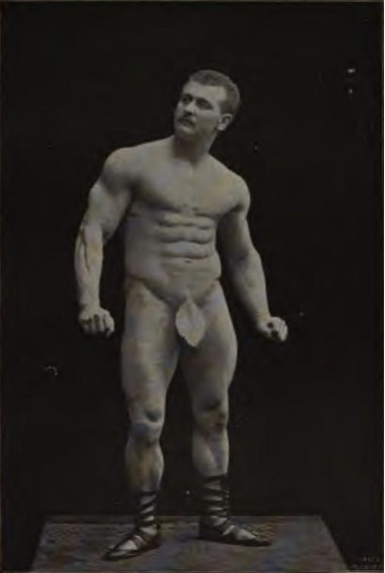
Figure 1. Photograph of Eugen Sandow from the mid-1890s. [64]
By choosing not to physically engaging with Sandow, Commodore disrupted the expected gender performance on show. The fight was supposed to see a ferocious lion struggle against one of the strongest men on the planet. Sandow’s victory would reinforce the importance of strength and muscularity for white Americans at a time of considerable panic. By not cooperating, similar to the circus elephants studied by Nance, Commodore altered the narrative. Sandow’s actions, his pulling of the animal’s mane, now seemed inherently cruel.[68] Far from being emblems of masculinity, his strength and muscularity appeared unnecessary and even preposterous. His actions became viewed as barbaric. Had Commodore chosen to fight, Sandow undoubtedly would have been praised for such actions. The farce of the bout highlighted the interplay between human and non-human in constructions of gender. Sandow needed a fearsome lion to battle so that he could play the part of the male hegemon. When this ‘beast’ was unforthcoming, the gender ideals fell apart. Sandow became a cruel tyrant.
As a final note, it is worth mentioning that Sandow himself recognised the importance of this event regarding his reputation and masculinity. Commenting on the event several years later in his popular monograph Strength and How to Obtain It, Sandow told readers that,
He [Commodore] knew that I was his master and he refused to fight. Feeling that the audience would be sadly disappointed I tried to goad him on, but nothing would move him. Most beasts are cowards at heart, and this lion having met his match at the rehearsal refused to budge…
The lion, recognising that my strength was too much for him, would fight no more. Though I lifted him up and walked round the arena with him on my shoulders he remained as firm as a rock and as quiet as a lamb….[69]
In his own retelling, Sandow had dominated a fearsome opponent, thereby displaying his raw, and potentially atavistic masculinity. Writing in 1975, the physical culture chronicler Leo Gaudreau, noted the legend attached to this bout. Sandow retold it as fearsome, even biblical epic. His supporters followed suit.[70] The strongman and his admirers thus understood, at some level, that normative masculinities exist not only in relation to women and other men, but also the natural world. The erratic behaviour of non-humans was to prove similarly troublesome to Sandow’s lion taming contemporary, Claire Heliot.
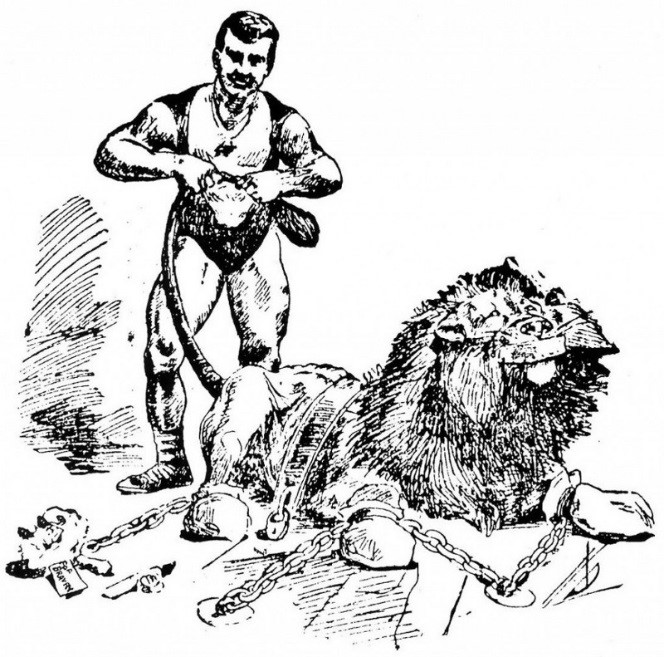
Figure 2. Sandow with the subdued lion as depicted in a contemporary San Francisco periodical.[71]
Claire Heliot and normative femininities
In the first instance, Heliot’s writings and performances with the lions were done with reference to acceptable norms of womanhood. While Heliot lacked the promotional zeal of a Sandow or a Ziegfield, she proved adept at remaining a figure of public interest. In 1906, Heliot produced a six-page article in Cosmopolitan Magazine, said to be based upon her actual diary entries.[76] Within the piece, Heliot distinguished her method of training from her male contemporaries. Men, readers were told, used cruel methods such as the whip or pistol to control the lion. Heliot on the other hand patiently gained their trust by diligently feeding them each day. In this way, Heliot stressed the fact that only through generosity could the lion’s temperament truly be tamed.[77] From Verbruge’s study on female physical education in America during this period, it is clear that Heliot too felt the need to stress her femininity in a traditionally masculine world.[78] Heliot thus sustained the acceptable feminine narrative created about her by American newspapers. Writing for the New York Times, Pendennis labelled Heliot a ‘timid sentimentalist’ despite her daring.[79] Similarly, the Washington Bee noted that ‘Mille Heliot goes about her work dressed in an ordinary evening gown, calling the lions by their pet names, patting and caressing them as if they were cats’.[80] That few reporters commented on the danger of Heliot’s pastime was testament to her ability to promote herself as gentle and calm in both print and visual media. Regarding the latter point, Heliot performed and was routinely pictured in evening wear. She even performed in a silk dress when the occasion was deemed appropriate for such formalities. The contrast between such traditional images of womanhood and Heliot’s own strength was startling. Even Health and Strength, the British physical culture magazine proved more enamoured with her feminine charm than her strength.
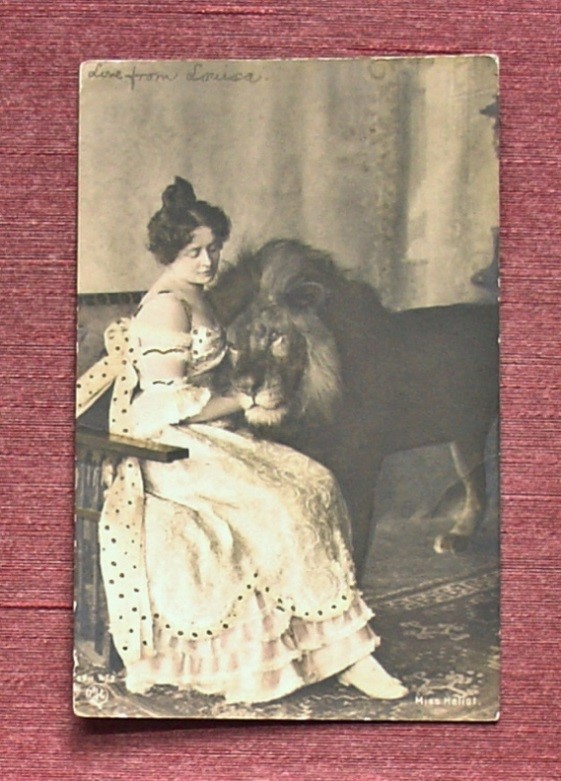
Figure 3. Heliot with Unnamed Lion c. 1902.[81]
This often-concealed element of danger was the reason Smith saw Heliot as potentially destabilising traditional gender norms surrounding woman’s capabilities.[84] Heliot had desperately tried to minimise attention on their more transgressive element of her shows through the use of evening gowns and elegant public interviews. Though many newspapers repeated the claim that the incident was harmless, later depictions noted the blood from Heliot’s dress.[85] Like Commodore, Sicchi’s non-compliance threatened the gender theatrics on display. This was to have lasting repercussions for Heliot’s shows as she soon made much greater use of her steel rod and whip to keep the lions under control.[86] This more traditional tactic was offset, it was hoped, by Heliot’s assertions that she merely used it to scare and not hurt the lions.[87] The tension between maintaining her feminine grace and the destabilising nature of her work never left Heliot’s public persona. Subsequent reports that another unfortunate attack forced Heliot to retire, suggest that the danger of lion taming never disappeared, nor did the autonomy of her animals.[88] Despite her best efforts, Heliot’s control over her animals was never exact. Like Sandow, she too relied on their compliance. When this compliance was not forthcoming, Heliot’s efforts to appear overtly feminine, her efforts to depict lion taming as safe for women and her efforts to present her animals as calm, noble hearted creatures, failed in a dangerous and painful manner. Not only did the subaltern bark, it bit.
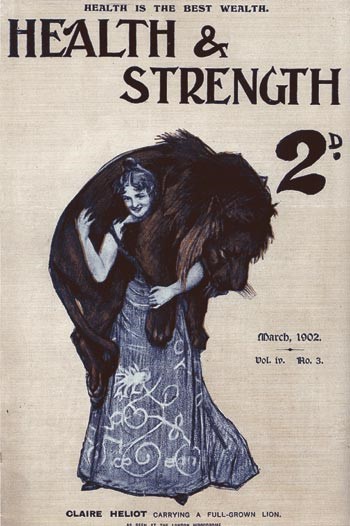
Figure 4. Health and Strength, March (1902) cover.[89]
Conclusions and future recommendations
Driven primarily by Day and Vamplew’s assertion that historians should not isolate themselves from other disciplines, the current chapter has sought to highlight the richness of animal history in the sporting domain. As a newly emerging discipline within the mainstream of historical writing, animal histories stress the importance of symbiotic relationships between human and non-human in a variety of fields and formats. Whereas previous studies have tended to neglect or ignore the role of the animal in human behaviour and history, animal histories have explored the manner in which an animal’s independent actions impact upon the broader social or political setting. For sporting historians, animals have featured peripherally in a series of studies on horse racing, hunting and dog racing amongst other pursuits. In doing so, issues of class, gender and politics have been brought to the fore and placed within their respective social, economic and political contexts. What has been generally lacking in such studies however, has been the agency of the individual animals themselves. This oversight has deprived sporting historians of the remarkable and insightful consequences of human and non-human interactions. Jockeys, trainers and hunters are in a privileged position with regards to their animals. Generally speaking they participate in the training, riding and feeding of the animal. Bonds are forged which, sources permitting, can point towards larger societal trends and studies.
To demonstrate the new perspectives offered by animal histories to the sporting historian, the present chapter discussed the lion taming efforts of the Prussian strongman Eugen Sandow and his Teutonic contemporary, the lion tamer Claire Heliot. In both instances it was argued that the performers sought to present themselves as emblems of normative masculinity and femininity in spite of the potential contradictions of this claim. Despite the relative control each entertainer was presumed to have over the lions, the animal’s own behaviour soon challenged the mystique surrounding the would-be tamers and their celebrated gender ideals. In Sandow’s case Commodore’s refusal to fight cast aspersions on the image of virile masculinity projected by Sandow. Had Commodore fought, Sandow’s aggressive approach would no doubt have been praised as manly. Commodore’s non-compliance instead saw Sandow depicted as a bully. Whereas Commodore’s refusal to fight cost Sandow, Sicchi’s decision to bite, and playfully attack, Heliot proved problematic. Heliot spent years cultivating an image of herself as a gentle woman with a calming effect over her animals, thereby conforming to prevailing ideas surrounding womanhood. When Sicchi bit Heliot however, the dangerous and transgressive nature of her performances was highlighted for all to see. In both instances the animal’s agency and the animal’s actions impacted upon the gender identities being portrayed by the humans. The animals themselves therefore mattered. For sporting historians, animal history represents another conceptual framework for the discipline. It can rebuild the lived experience of both the trainer and the trained, or the owner and the owned. When the animal acts, the human responds and vice versa. The result of this can be very telling indeed. For interested parties, future lines of enquiry may for example examine the daily and lived relationship between the jockey and the horse, between the Master of the Hounds and the pack or the cock fighter and his owner. Similarly, and building on Dashper and Fletcher’s work on Kauto Star, historians would do well to dissect the role of animal celebrity and how an animal’s behaviour, victories and losses are interpreted by humans.[90] The race track and the reaction of disgruntled gamblers could prove particularly fertile in this regard. Finally, mirroring the work done by Hämäläinen, McShane, and Tarr, histories on the construction of the race tracks, of stables, feeding grounds etc. could highlight the manner in which the sporting animal’s needs dictated the human’s geography.[91] Animal history does not conflict with sporting history. Instead, it has the potential to compliment it.
Acknowledgements and References
This work was generously funded by the Irish Research Council Government of Ireland Postgraduate Scholarship and a Universities’ Ireland History Bursary. The author is greatly indebted to the generosity of David Chapman, who kindly shared images and, more importantly, ideas related to the topic. Without David’s enthusiastic and knowledgeable responses, the chapter would not have come to fruition. Finally, the author would like to thank Dr. Paul Rouse, Matthew O’Brien and Julien Clénet for humouring the author’s ramblings in the early stages of this work.
[1] Harriet Ritvo, ‘Animal Planet’, Environmental History 9, no. 2 (2004): 205.
[2] Dave Day and Wray Vamplew, ‘Sports History Methodology: Old and New’, The International Journal of the History of Sport, 32, no. 15 (2015): 1722.
[3] Ibid., 1716. See also Douglas Booth, The Field: Truth and Fiction in Sport History (Abingdon: Routledge, 2005), 210.
[4] Nicholas Piercey, Four Histories about Early Dutch Football (London: UCL Press, 2016), 8-20. See also Gary James, ‘Historical Frameworks and Sporting Research’, The International Journal of the History of Sport, 33, no. 10 (2016): 1169-1187.
[5] On hegemonic masculinities see Raewyn W. Connell, ‘An Iron Man: The Body and Some Contradictions of Hegemonic Masculinity’, in Sociological Perspectives in Sport: The Games Outside the Games, ed. David Karen and Robert E. Washington (New York: Routledge, 1990), 19; Masculinities (California: University of California Press, 2005), 22-45; Raewyn W. Connell, and James W. Messerschmidt, ‘Hegemonic Masculinity: Rethinking the Concept’, Gender and Society 19, no. 6 (2005): 832-835.
[6] Andrea L. Smalley, Wild by Nature: North American Animals Confront Colonization (Baltimore: JHU Press, 2017), 6-8.
[7] Ritvo, ‘Animal Planet’: 205.
[8] Ewa Domańska, ‘The Historical Animal. Edited by Susan Nance. Syracuse: Syracuse University Press, 2015. Pp. ix, 405’, History and Theory 56, no. 2 (2017): 267-268.
[9] Hilda Kean, ‘Challenges for Historians Writing Animal–Human History: What Is Really Enough?’, Anthrozoös 25, no. 1 (2012): 57-72.
[10] Susan Nance, ed., ‘Introduction’ in The Historical Animal (Syracuse: Syracuse University Press, 2015), 11.
[11] Anita Guerrini, ‘Deep History, Evolutionary History, and Animals in the Anthropocene’, in Animal Ethics in the Age of Humans, ed. B. Bovenkerk and F. W. J. Keulartz (New York: Springer, 2016), 27-28.
[12] Etienne Benson, ‘The Urbanization of the Eastern Gray Squirrel in the United States’, Journal of American History 100, no. 3 (2013): 691-710.
[13] Ibid.: 700-706.
[14] Virginia DeJohn Anderson, Creatures of Empire: How Domestic Animals Transformed Early America (New York: Oxford University Press, 2006).
[15] Ibid., 5.
[16] Pekka Hämäläinen, ‘The Rise and Fall of Plains Indian Horse Cultures’, The Journal of American History 90, no. 3 (2003): 833-862.
[17] Clay McShane and Joel Tarr, The Horse in the City: Living Machines in the Nineteenth Century (Baltimore: JHU Press, 2007).
[18] Aaron Herald Skabelund, Empire of Dogs: Canines, Japan, and the Making of the Modern Imperial World (Ithaca: Cornell University Press, 2011), 12.
[19] Susan Nance, Entertaining Elephants: Animal Agency and the Business of the American Circus (Baltimore: Johns Hopkins University Press, 2013), 11, 182.
[20] On the historiographic considerations of animal history and indeed for a good introduction to the methodological underpinnings of animal history see Etienne Benson, ‘Animal Writes: Historiography, Disciplinarity, and the Animal Trace’, in Making Animal Meaning, ed. Linda Kalof and Georgina M. Montgomery (Michigan: Michigan State University Press, 2011), 3-16.
[21] Richard Grove, ‘Early Themes in African Conservation: The Cape in the Nineteenth Century’, in Conservation in Africa: Peoples, Policies and Practice, ed. David Anderson and Richard H. Grove (Cambridge: Cambridge University Press, 1989), 21-40; Marge DeMello, Animals and Society: An Introduction to Human-Animal Studies (Columbia: Columbia University Press, 2012), 84-99, 146-169; Frederick L. Brown, The City is More Than Human: An Animal History of Seattle (Washington: University of Washington Press, 2016), 4-16.
[22] For interested parties, an excellent collection of essays can be found in the following collection: Dorothee Brantz, ed., Beastly Natures: Animals, Humans, and the Study of History (Virginia: University of Virginia Press, 2010).
[23] Skabelund, Empire of Dogs, 14-15.
[24] James Gillett and Michelle Gilbert, eds., Sport, Animals, and Society (London: Routledge, 2013).
[25] Lynda Birke and Kirrilly Thompson, ‘“The Horse Has Got to Want to Help”, Human-Animal Habituses and Networks of Relationality in Amateur Show Jumping’, in Sport, Animals, and Society, ed. James Gillet and Michelle Gilbert (London: Routledge, 2013), 81-96.
[26] Sharon E. Cregier, ‘Horsebreakers, Tamers, and Trainers: An Historical, Psychological, and Social Review’, Advances in Animal Welfare Science 1986/87, eds. M.W. Fox and Linda Mickley (Springer: Dordrecht, 1987), 89-101.
[27] Giuliana Lund, ‘Taking Teamwork Seriously: The Sport of Dog Agility as an Ethical Model of Cross-Species Companionship’, in Sport, Animals, and Society, ed. James Gillet and Michelle Gilbert (London: Routledge, 2013), 113-136.
[28] Susan Nance, ‘“A Star is Born to Buck”: Animal Celebrity and the Marketing of Professional Rodeo’, in Sport, Animals, and Society, ed. James Gillet and Michelle Gilbert (London: Routledge, 2013), 173-191.
[29] For dog racing see Daryl Leeworthy, ‘A Diversion from the New Leisure: Greyhound Racing, Working-Class Culture, and the Politics of Unemployment in Inter-war South Wales’, Sport in History 32, no. 1 (2012): 53-74; Mike Huggins, ‘“Everybody’s Going to the Dogs”? The Middle Classes and Greyhound Racing in Britain between the Wars’, Journal of Sport History 34, no.1 (2007): 96-120; Mike Cronin, ‘Arthur Elvin and the Dogs of Wembley’, The Sports Historian 22, no. 1 (2002): 100-14; Norman Baker, ‘Going to the Dogs: Hostility to Greyhound Racing in Britain: Puritanism, Socialism, and Pragmaticism’, Journal of Sport History 23, no. 2 (1996): 97-119.
[30] James Williams, ‘The Cambridge Companion to Horseracing’, Sport in History 34, no. 2 (2014): 378-382.
[31] Jeremy Crump, ‘Horseracing and Liberal Governance in Nineteenth Century Leicester’, Sport in History 36, no. 2 (2016): 190-213.
[32] Alison Goodrum, ‘The Style Stakes: Fashion, Sportswear and Horse Racing in Inter-War America’, Sport in History, 35, no.1 (2015): 46-80.
[33] Wray Vamplew, The Turf: A Social and Economic History of Horse Racing (London: Allen Lane, 1976); Mike Huggins, Horseracing and the British 1919-39 (Manchester: Manchester University Press, 2010).
[34] Katherine Dashper and Thomas Fletcher, ‘“Like a Hawk among House Sparrows”: Kauto Star, a Steeplechasing Legend’, Sport in History 33, no. 4 (2013): 488-511.
[35] Ibid.: 500-511.
[36] See Edward Hotaling, The Great Black Jockeys: The Lives and Times of the Men who Dominated America’s First National Sport (New York: Prima Pub, 1999), 242.
[37] Huggins, Horseracing and the British 1919-39, 168.
[38] Kari Weil, ‘Men and Horses: Circus Studs, Sporting Males and the Performance of Purity in Fin-de-Siëcle France’, French Cultural Studies 17, no. 1 (2006): 87-105; Berit Brandth and Marit S. Haugen, ‘Doing Rural Masculinity–from Logging to Outfield Tourism’, Journal of Gender Studies 14, no. 1 (2005): 13-22; ‘Text, Body, and Tools: Changing Mediations of Rural Masculinity’, Men and Masculinities 8, no. 2 (2005): 148-163.
[39] Jonathan Finch, ‘“Grass, Grass, Grass”: Fox-Hunting and the Creation of the Modern Landscape’, Landscapes 5, no. 2 (2004): 41-52; James Williams, ‘Hunting and the Royal Image of Henry VIII’, Sport in History 25, no. 1 (2005): 41-59; Michael Tichelar, ‘“Putting Animals into Politics”: The Labour Party and Hunting in the First Half of the Twentieth Century’, Rural History 17, no. 2 (2006): 213–234.
[40] Callum McKenzie, ‘The British Big-Game Hunting Tradition, Masculinity and Fraternalism with Particular Reference to the “The Shikar Club”’, Sports Historian 20, no. 1 (2000): 70-96; Joseph Sramek, ‘“Face Him Like a Briton”: Tiger Hunting, Imperialism, and British Masculinity in Colonial India, 1800-1875’, Victorian Studies 48, no. 4 (2006): 659-680.
[41] Erica Munkwitz, ‘The Master is the Mistress: Women and Fox Hunting as Sports Coaching in Britain’, Sport in History 37, no. 4 (2017): 412.
[42] See also Erica Munkwitz, ‘Vixens of Venery: Women, Sport, and Fox-Hunting in Britain, 1860-1914’, Critical Survey, 24 no. 1, (2012): 74-87.
[43] Karen Manners Smith, ‘New Paths to Power, 1890-1920’, in No Small Courage: A History of Women in the United States, ed. Nancy Cott (New York: Oxford University Press, 2000), 374-412; William H. Chafe, The American Woman: Her Changing Social, Economic, and Political Roles, 1920-1970 (New York: Oxford University Press, 1972); Kathy Peiss, Cheap Amusements: Working Women and Leisure in Turn-of-the-Century New York (Philadelphia: Temple University Press, 1986); Annelise Orleck, Common Sense and a Little Fire: Women and Working-Class Politics in the United States, 1900- 1955 (Chapel Hill: University of North Carolina Press, 1995).
[44] Michael Kimmel, ‘The Contemporary “Crisis” of Masculinity in Historical Perspective’, in The Making of Masculinities: The New Men’s Studies, ed. Harry Brod (Boston: Allen & Unwin, 1987), 138.
[45] Matthew Pratt Guterl, The Color of Race in America, 1900-1940 (Boston: Harvard University Press, 2009), 9-10; Alice Kessler-Harris, Out to Work: A History of Wage-Earning Women in the United States (New York: Oxford University Press, 1982), 117-140.
[46] Glenda Elizabeth Gilmore, Gender and Jim Crow: Women and the Politics of White Supremacy in North Carolina, 1896-1920 (Chapel Hill: University of North Carolina Press, 1996).
[47] Gail Bederman, Manliness and Civilization: A Cultural History of Gender and Race in the United States, 1880-1917 (Chicago and London: University of Chicago Press, 1995), 4.
[48] Canonical texts being: Bederman, Manliness and Civilization; E. Anthony Rotundo, American Manhood: Transformations in Masculinity from the Revolution to the Modern Era (New York: Basic Books, 1993); Michael Kimmel, Manhood in America: A Cultural History (New York: Free Press, 1996), 6.
[49] Michael Kimmel, ‘Baseball and the Reconstitution of American Masculinity, 1880–1920’ in Sport, Men and the Gender Order: Critical Feminist Perspectives, ed. Michael Messner and Don Sabo (Champaign, IL: Human Kinetics, 1990), 55.
[50] Clifford Putney, Muscular Christianity: Manhood and Sports in Protestant America, 1880-1920 (Harvard: Harvard University Press, 2009), 47.
[51] Corrine M. McConnaughy, The Woman Suffrage Movement in America: A Reassessment (Cambridge: Cambridge University Press, 2013), 7-15; Susan K. Cahn, Coming on Strong: Gender and Sexuality in Women’s Sport (Harvard: Harvard University Press, 1994), 7-25; Nancy M. Theriot, Mothers and Daughters in Nineteenth-Century America: The Biosocial Construction of Femininity (Kentucky: University Press of Kentucky, 1996), 115-130.
[52] Judith Butler, Gender Trouble: Feminism and the Subversion of Identity (New York: Routledge, 1990), 34-45.
[53] See also the iconic Teresa De Lauretis, Technologies of Gender: Essays on Theory, Film, and Fiction (Indiana: Indiana University Press, 1987), 3-5.
[54] David Chapman, Sandow the Magnificent: Eugen Sandow and the Beginnings of Bodybuilding (Illinois: University of Illinois, 2006).
[55] Niall Richardson, Transgressive Bodies: Representations in Film and Popular Culture (London: Routledge, 2016), 26.
[56] Sandow’s eventual impact on American physical culturists was felt for decades. See Jan Todd, ‘Bernarr Macfadden: Reformer of Feminine Form’, Journal of Sport History 14, no. 1 (1987): 61-75.
[57] Chapman, Sandow the Magnificent, 80-95; David Waller, The Perfect Man: The Muscular Life and Times of Eugen Sandow, Victorian Strongman (London: Victorian Secrets, 2011), 77-91.
[58] Conor Heffernan, ‘Strength Peddlers: Eddie O’Callaghan and the Selling of Irish Strength’, Sport in History 38, no. 1 (2018), 23-45.
[59] Ethan Mordden, Broadway Babies: The People Who Made the American Musical, (New York: Oxford University Press, 1988), 35.
[60] Ethan Mordden, Ziegfeld: the Man Who Invented Show Business (London: Macmillan, 2008), 27-29.
[61] Chapman, Sandow the Magnificent, 85.
[62] ‘For the Love of Art’, Morning Call, May 20, 1894, 3.
[63] Putney, Muscular Christianity, 47.
[64] Image from Eugen Sandow, Strength and How to Obtain It (London: Gale & Polden, 1897), 115.
[65] ‘A Picnic for the Perfect Man’, Los Angeles Herald, May 23, 1894, 3.
[66] ‘Man Versus Lion’, Morning Call, May 23, 1894, 3.
[67] A final example being ‘No Fight in Him’, Salt Lake Herald, May 24, 1894, 1.
[68] Nance, Entertaining Elephants, 119.
[69] Sandow, Strength and How to Obtain It, 137-138.
[70] Leo Gaudreau, Anvils, Horseshoes and Cannons: The History of Strongmen Vol. II, (New Hampshire: Leo Gaudreau, 1975), 41-42.
[71] Image courtesy of David Chapman’s Personal Collection.
[72] Peta Tait, Fighting Nature: Travelling Menageries, Animal Acts and War Shows (Sydney: Sydney University Press, 2017), 233.
[73] This was a common tactic for female performers of strength in the United States at this time. See Jan Todd, ‘Center Ring: Katie Sandwina and the Construction of Celebrity’, Iron Game History 10, no. 1 (2007): 4-13.
[74] ‘She Controls Lions by Kindness’, Chicago Daily Tribune, November 3, 1901, 48; ‘Why It Is Harder to Tame a Husband Than a Lion’, Chicago Daily Tribune, April 1, 1906, 4.
[75] Jacob Smith, The Thrill Makers: Celebrity, Masculinity, and Stunt Performance (California: University of California Press, 2012), 97-98.
[76] Claire Heliot, ‘Diary of a Lion-Tamer’, Cosmopolitan Magazine 41, September 1906, 463-468.
[77] Ibid., 465-468.
[78] Martha H. Verbrugge, ‘Recreating the Body: Women’s Physical Education and the Science of Sex Differences in America, 1900-1940’, Bulletin of the History of Medicine 71, no. 2 (1997): 273-304.
[79] Pendennis, ‘Claire Heliot: Most Daring of Lion Tamers’, New York Times, October 29, 1905, 1.
[80] ‘Miss Claire Heliot’, Washington Bee, November 30, 1901, 7
[81] Image from Author’s Collection.
[82] Ibid.
[83] Heliot, ‘Diary of a Lion Tamer’, 466.
[84] Smith, The Thrill Makers, 97-98.
[85] Tait, Fighting Nature, 229.
[86] Ibid.
[87] Heliot, ‘Diary of a Lion Tamer’, 466.
[88] Tait, Fighting Nature, 233.
[89] Image courtesy of David Chapman’s Personal Collection.
[90] Dashper and Fletcher, ‘“Like a Hawk among House Sparrows”’: 488-511.
[91] Pekka Hämäläinen, ‘The Rise and Fall of Plains Indian Horse Cultures’, The Journal of American History 90, no. 3 (2003): 833-862; Clay McShane and Joel Tarr, The Horse in the City: Living Machines in the Nineteenth Century (Baltimore: JHU Press, 2007).

